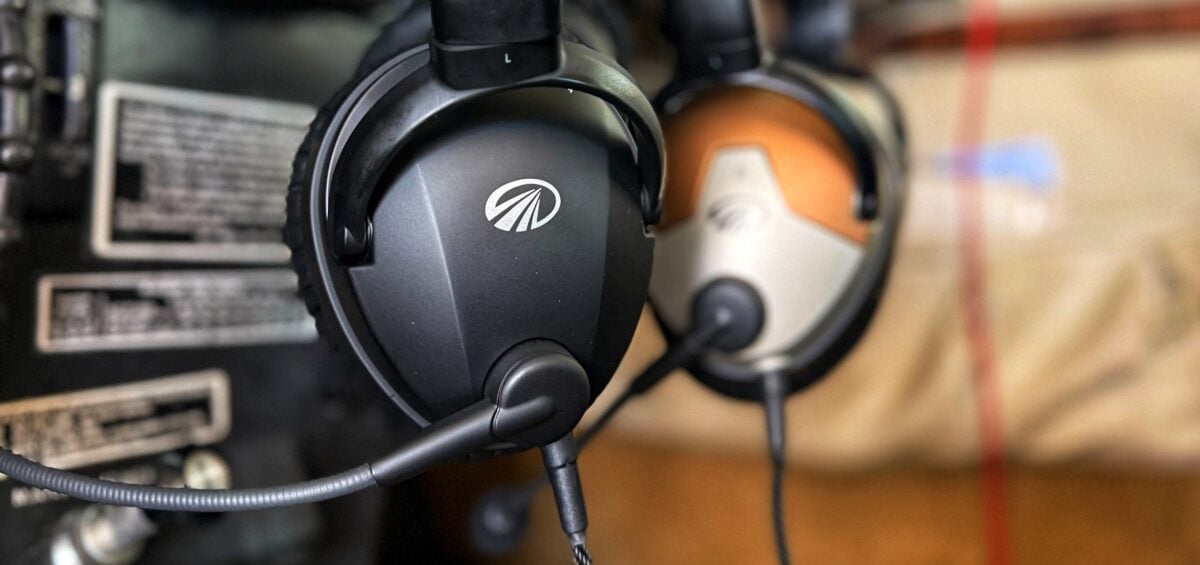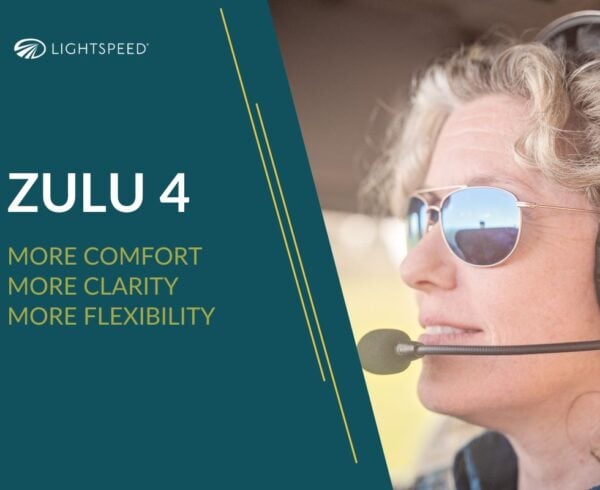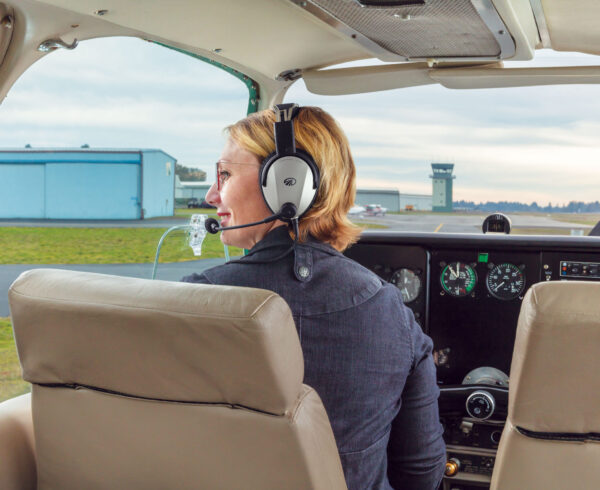The Zulu 4 premium aviation headset continues Lightspeed’s tradition of innovation with improvements in comfort, clarity, and flexibility. To help pilots choose the right headset for their needs, we’ll compare the features of the new Zulu 4 aviation headset and the Lightspeed Delta Zulu®, the first safety-forward aviation headset for pilots, with life-saving technology that no other headset offers.
A Category of Its Own
The biggest difference between the two headsets is that the Lightspeed Delta Zulu headset has built-in carbon monoxide detection. Lightspeed Delta Zulu continuously monitors CO levels and provides audible warnings with our Kanari® smart alert technology. It is the first and only aviation headset to provide this life-saving technology. While the Zulu 4 does not include CO detection, it continues the evolution of the Zulu series with new features that support safe and successful missions and enhance the flying experience.
Evolved Comfort
The Zulu 4 aviation headset takes the already excellent fit and comfort of the Zulu series to a new level with the introduction of FrameFit™ ear seals. These new ear seals use dual density foam to improve performance when wearing sunglasses, hats, or other eye and headwear. The use of lower density foam inside the top of the ear seal reduces pressure while still maintaining an uncompromised seal that when broken can lead to a depressurized or warbling effect with the ANR and increase fatigue.
Both headsets use the Zulu series signature large ear cup cavities which encompass the entire ear to keep pressure around the ear and not on the ear. Those large cup cavities paired with our low-profile stainless-steel headband mean both the Zulu 4 and Lightspeed Delta Zulu prioritize pilot comfort by reducing pressure and distributing weight evenly to maintain the highest levels of comfort during flight.
Focus on Clarity
Our flagship Lightspeed Delta Zulu headset prioritizes audio clarity for the pilot with the ability to create custom hearing profiles using the HearingEQity® feature in the Lightspeed app for iOS devices. HearingEQity allows you to create an individualized hearing profile from a custom 12-frequency hearing test to optimize every ATC call and conversation. With the ability to save multiple profiles, the Lightspeed Delta Zulu lets different users switch to their own individualized profiles on the same headset.
While the Zulu 4 doesn’t include HearingEQity, it offers state-of-the-art noise reduction and sound quality. It adds dramatic noise reduction in outbound Bluetooth communications using AI-enhanced technology, making calls with these Bluetooth-connected devices clearer than any other aviation headset. This feature can eliminate up to 90% of the background noise picked up by the microphone prior to transmission, making your call sound as though there is no engine noise in the background at all.
Equipped for Flexibility
Both the Zulu 4 and Lightspeed Delta Zulu include support for multiple plug configurations, but the Lightspeed Delta Zulu goes a step further with including interchangeable battery options – a rechargeable lithium-ion battery cartridge is included as well as the standard AA battery power cartridge. While Zulu 4 is not recommended for use with rechargeable AA batteries, it brings other improvements in flexibility to the Zulu series.
The multipoint Bluetooth feature lets you connect two devices to Zulu 4 via Bluetooth simultaneously. To switch between devices, you simply pause audio on one and start it on the other without having to unpair and re-pair devices. The Zulu 4’s 10% longer mic boom gives you more freedom in mic positioning for better voice pickup, and the longer upper cable gives you more options in cable-routing for a clean and tidy cockpit.
Top Choices
Both the Zulu 4 and Lightspeed Delta Zulu are excellent choices for premium ANR headsets and offer industry-leading features and quality. The Lightspeed Delta Zulu headset offers top-of-the-line sound and quality plus unique safety features, with built-in CO detection and customizable hearing profiles, while the Zulu 4 brings new innovations in comfort, flexibility, and communication clarity, promoting pilot safety at a lower price point. At the time of this publication the Zulu 4 is available for $1,099, while the Lightspeed Delta Zulu lists at $1,299.















I need an Android app for the Delta Zulu before I can buy one!
Hi Don,
While we don’t currently offer an Android version of the app, your Lightspeed Delta Zulu will work as designed. An iOS device (iPhone or iPad with iOS 13 or higher) is only needed once—for initial setup of your HearingEQity™ profile and CO settings. After setup, your preferences stay saved in the headset, so no iOS device is needed for everyday use. Learn more here: Lightspeed Delta Zulu Support page.
The most important thing to me is Noise Cancellation.
What are the dBs of cancellation of these two headsets, and also the Bose headset?
Thanks,
Hi Tod! We do not publish noise cancellation levels in dB since that figure actually measures passive noise reduction, while the Zulu 4 and Lightspeed Delta Zulu (and the Bose you mentioned) use active noise reduction (ANR) to electronically cancel sound. Because ANR performance varies by aircraft type and cockpit environment, there’s no standardized way to express it in dB. For more information about how passive and active noise reduction differ, you can check out this article here: Passive vs Active Noise Reduction in Aviation Headsets. Also, in our ANR 101 Section 3 article we do show the dB level of an aircraft (red), against the noise reduction of a passive headset, and our ANR: https://www.lightspeedaviation.com/anr/anr-201-section-3-acoustic-design-tradeoffs/.